
views
Pruning Aloe Vera
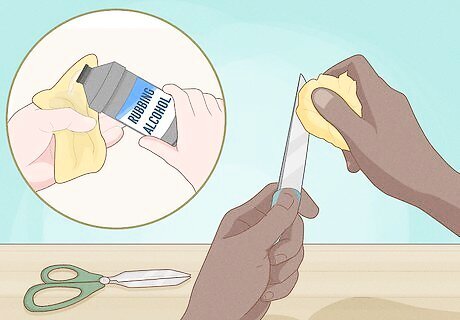
Get a cutting utensil. You’ll need something that can cut through small leaf stems and roots, such as a knife from your kitchen. Scissors can also be used, and if you’ve let a big plant go for a while, you many need shears to tame it. Sterilize kitchen knives before using them on your plant. You can do this by rubbing alcohol on the blade, and letting it dry.
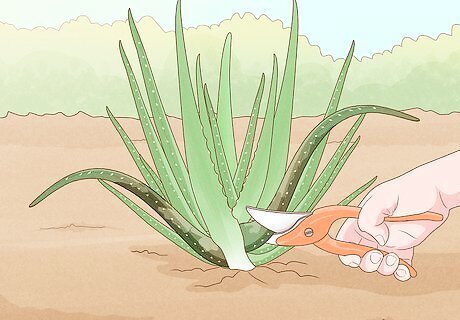
Trim damaged leaves. Tackle the bad leaves first. Carefully move the branches and leaves if you have to in order to find any leaves that are dried, brown, or dead. Unhealthy leaves that are highly discolored can also be removed. Use your knife or scissors to cut them at the stem. Be gentle as you do this so that you do not accidentally break healthy leaves. Pests or disease on these leaves can infect the plant, so these leaves must be removed. Poor lighting, too little water, or too much water are causes for dying leaves. Aesthetically, it's best to harvest a whole leaf at a time, rather than cutting it in half.
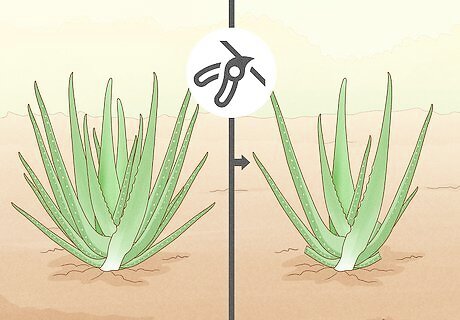
Cut excess outer leaves. Use your knife or shears to remove enough healthy leaves to make the plant fit in the pot. Bring the cutting tool to the base of the stem and slice through cleanly. These leaves are the oldest and contain the most aloe vera gel. The gel has many medicinal purposes. If you want to use these leaves, cut the thorny edges on the leaves and store the leaves in the refrigerator until you want to extract the gel. Avoid cutting leaves closest to the plant's main stem. These leaves are young and are needed to replace the old leaves. Typically, an aloe vera plant will shed its lower leaves over time anyway, so these are the ideal leaves to trim when you want to prune your plant.
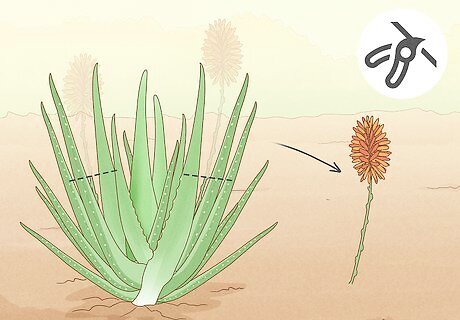
Remove old stems and blossoms. Cut these at the stem the same way you cut leaves. Once the flowers on the plant blossom, they soon drop seeds. While they die, they use nutrients that the plant could be putting towards new, healthy leaves. Since flowers rarely occur on aloe grown as a houseplant, if you grow your aloe vera indoors, you will likely not have to deal with blossoms. Dead flowers attract bugs and can drop into the plant’s pot, absorbing water and creating a mess.
Clearing the Soil
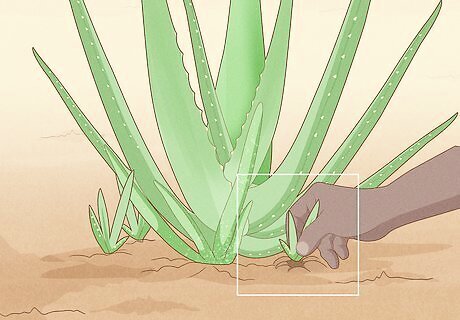
Remove suckers. Also called pups, suckers are offshoot plants. These new growths take energy away from your plant and crowd the pot. Most of the time, you can pull the shoots up out of the dirt with no harm to the plants. Use your cutting tool to cut the shoot off of your plant. Some suckers may get buried and tangled under the soil, so you’ll have to take the plant out of the pot, carefully remove the dirt from the root ball, and untangle the roots. If you'd like, you can plant the pups in their own containers to grow them into a whole new plant.
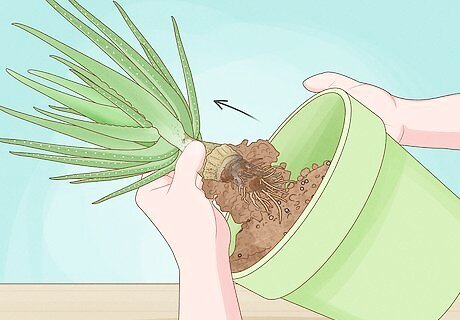
Remove the plant from its pot. Make sure the soil is slightly damp before you remove the plant; this will help prevent damage to the roots. Gently hold the stem of the plant as you tilt the pot to the side. The plant should come out if you pull on it. If it doesn’t, try squeezing the pot or tapping it against a solid surface. Deal with any suckers you couldn’t get before.
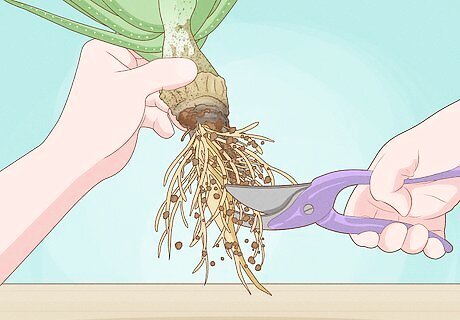
Prune the roots. If you need to repot the plant, you may need to do this. First, shake the dirt off the plant. Trim the long root and remove some side roots. The amount that you leave should be enough to take up about 2/3 of its new pot. This makes the aloe vera easier to transport but also allows it to regrow a stronger root system in new soil. Water lightly until the plant has adjusted. Let the plant air out for a day after pruning the roots. This will let any cuts on the roots heal into callouses and prevent long-term damage to the plant. Look out for root rot. Find any damaged areas and slice them off, being careful not to damage the healthy root. Sprinkle powdered sulfur or charcoal on the pruned areas if you can.




















Comments
0 comment